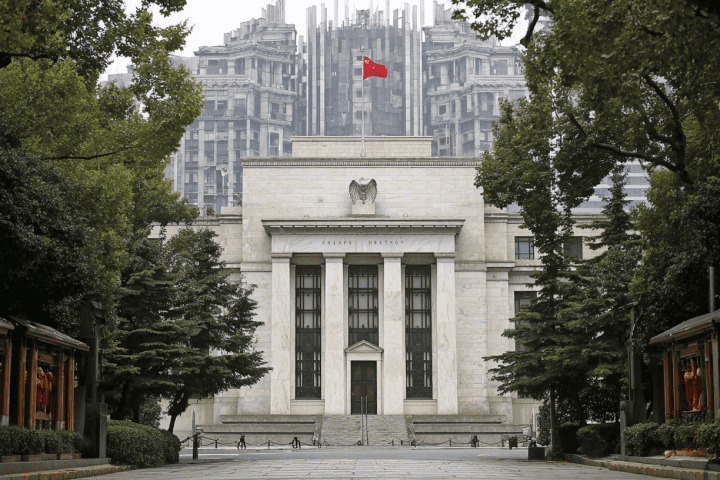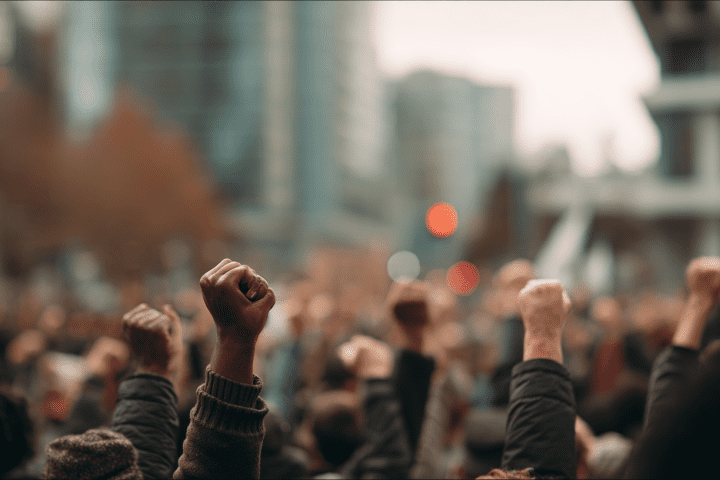The green economy has emerged as the defining paradigm for sustainable development in 2025, with countries worldwide implementing ambitious policies to balance economic growth with environmental protection. As nations confront the urgent realities of climate change, resource depletion, and environmental degradation, the transition to a green economy represents both an opportunity and a necessity for achieving long-term prosperity. Understanding how countries are navigating this complex transition to sustainable development provides crucial insights into the future of global economic and environmental policy.
Sustainable development through a green economy framework combines environmental, social, and economic objectives, aiming to achieve prosperity while maintaining ecological integrity. This approach recognizes that traditional economic models focused solely on growth are no longer viable in a world facing unprecedented environmental challenges.
Defining the Green Economy Framework
Core Principles and Objectives
A green economy is defined as low carbon, resource efficient and socially inclusive. In a green economy, growth in employment and income are driven by public and private investment into economic activities, infrastructure and assets that allow reduced carbon emissions and pollution, enhanced energy and resource efficiency, and prevention of biodiversity loss.
The green economy framework combines three critical aspects: environmental, social, and economic objectives—aiming at attaining sustainable development through renewable energy, sustainable agriculture, and innovative waste management practices. This comprehensive approach ensures that economic progress doesn’t come at the expense of environmental degradation or social equity.
The notion of green economy does not replace sustainable development, but creates a new focus on the economy, investment, capital and infrastructure, employment and skills and positive social and environmental outcomes. This shift emphasizes measurable economic benefits while achieving environmental and social goals.
Investment and Policy Requirements
These green investments need to be enabled and supported through targeted public expenditure, policy reforms and changes in taxation and regulation. Countries are discovering that successful transition to sustainable development requires coordinated policy frameworks that address market failures, provide incentives for green investment, and remove barriers to sustainable business practices.
The transition demands substantial upfront capital investments in infrastructure and technology that may be beyond public and private budgets, especially for developing countries with limited financial resources. This financial challenge requires innovative funding mechanisms and international cooperation to ensure equitable access to green economy opportunities.
Leading Examples of Green Economy Transitions
China’s Remarkable Green Transformation
China’s approach to green economy transition demonstrates how large-scale government commitment can drive rapid change. In 2024, China accounted for over 40% of global renewable energy capacity and invested $818 billion in its energy transition—more than double any other economy. This massive investment illustrates China’s recognition that the green economy represents both environmental necessity and economic opportunity.
BloombergNEF calculates that the Chinese mainland invested $818 billion in its energy transition in 2024—more than double any other economy. This investment strategy reflects China’s understanding that sustainable development requires immediate, large-scale action rather than gradual transition.
China’s Special Envoy for Climate Change, Liu Zhenmin, emphasizes that China’s commitment to its green transition is “very solid and very firm,” regardless of global changes. This commitment demonstrates how national security considerations can align with sustainable development objectives, creating powerful incentives for green economy transformation.
European Union’s Comprehensive Strategy
The European Union has positioned itself as a global leader in green economy transition through the European Green Deal, which aims to make Europe climate neutral by 2050. The European Green Deal is Europe’s new growth strategy, which will transform the Union into a modern, resource-efficient and competitive economy.
The EU’s approach emphasizes that turning climate and environmental challenges into opportunities will make the transition just and inclusive for all. This focus on equity ensures that green economy benefits reach all segments of society while addressing environmental goals.
European countries are implementing reforms that protect natural capital, transition to resource-efficient economies, and shield people from environment-related pressures. These comprehensive policies demonstrate how sustainable development requires integrated approaches addressing multiple environmental and social challenges simultaneously.
Developing Country Innovations
Developing countries are implementing innovative approaches to green economy transition that address their unique circumstances and constraints. Coal phase-out, fossil fuel subsidy reform, the development of renewable energy, circular economy and waste management, and sustainable agriculture and land use are being examined across countries including Bangladesh, Colombia, India, Indonesia, Nigeria, and South Africa.
These case studies reveal that transition to sustainable development must be adapted to local contexts, economic structures, and development priorities. Countries are finding that successful green economy policies often address multiple development challenges simultaneously, creating synergies between environmental and social objectives.
Sectoral Transformations and Opportunities
Energy Transition Leadership
Moving to clean energy is key to combating climate change, yet in the past five years, the energy transition has stagnated. Energy consumption and production contribute to two-thirds of global emissions, and 81% of the global energy system is still based on fossil fuels—the same percentage as 30 years ago.
However, countries leading green economy transition are demonstrating that rapid energy system transformation is possible. The development of renewable energy systems creates jobs, reduces energy costs, and enhances energy security while achieving environmental objectives.
Effective policies, private-sector action and public-private cooperation are needed to create a more inclusive, sustainable, affordable and secure global energy system. Countries successful in green economy transition are implementing comprehensive energy policies that coordinate market mechanisms, regulatory frameworks, and public investment.
Transport and Mobility Solutions
Transport represents almost a quarter of the EU’s greenhouse gas emissions and is one of the main causes of air pollution in cities. Countries are developing smart, sustainable and efficient transport solutions that put users first and provide more affordable, accessible, healthier and cleaner alternatives.
The transition to sustainable transport systems demonstrates how green economy policies can simultaneously address environmental objectives, public health concerns, and economic development goals. Electric vehicles, public transport improvements, and active mobility infrastructure create employment while reducing emissions.
Circular Economy and Waste Management
A circular economy with sustainable consumption and production patterns aimed at minimal waste generation through recycling, reusing, and repairing can bring alternatives to traditional ways of consumption and production. Countries implementing circular economy policies are discovering significant economic opportunities in waste reduction and resource efficiency.
The circular economy approach exemplifies how green economy principles can transform traditional business models, creating new industries and employment opportunities while reducing environmental impacts. This transformation requires coordinated policy frameworks addressing product design, waste management, and consumer behavior.
Employment and Social Dimensions
Just Transition Principles
A transition to a low-carbon, greener economy will imply the creation of new jobs in environmentally friendly production processes and outputs, whereas other jobs will be at risk, particularly in sectors with fewer options for transition towards more sustainable production methods.
If properly managed, climate change action can lead to more and better jobs. Both adaptation to climate change and measures to mitigate greenhouse gas emissions offer opportunities to create new jobs while securing existing ones. This demonstrates that green economy transition can be designed to enhance rather than threaten employment opportunities.
The concept of “just transition” ensures that the move towards sustainable development doesn’t leave workers or communities behind. Countries implementing successful green economy policies provide retraining programs, social support, and economic diversification opportunities for affected workers and regions.
Skills Development and Green Jobs
The green economy requires new skills and competencies across multiple sectors. Countries are investing in education and training programs that prepare workers for emerging green industries while supporting those transitioning from traditional sectors.
Green jobs span multiple industries including renewable energy, energy efficiency, sustainable agriculture, waste management, and environmental services. This diversity demonstrates that green economy transformation creates opportunities across skill levels and economic sectors.
Financial Mechanisms and Investment Strategies
Public and Private Investment Coordination
The low-carbon energy transition presents several economic challenges, particularly regarding how to reconcile climate policy imperatives with broader macroeconomic priorities, notably employment and economic stability. Countries are developing innovative financing mechanisms that mobilize both public and private resources for green economy transition.
Multilateral development banks and private sector partnerships are potentially game-changing elements to mobilize resources and knowledge for sustainable projects in developing countries. These partnerships demonstrate how international cooperation can accelerate transition to sustainable development while sharing costs and risks.
Green Finance Innovation
Countries are implementing green bonds, carbon pricing mechanisms, and environmental tax reforms that create market incentives for sustainable development. These financial innovations help internalize environmental costs and benefits, making green investments more competitive with traditional alternatives.
The development of green finance standards and disclosure requirements helps channel private capital toward green economy objectives while reducing investment risks and transaction costs. This financial infrastructure is essential for scaling up green economy investments to meet climate and development goals.
Technology and Innovation Drivers
Digital Technologies and Sustainability
More than 800 large Chinese companies have undertaken to reach carbon neutrality by 2050 by deploying energy-saving automated processes and AI from farm fields to factory floors. These technological applications demonstrate how digital innovation can accelerate green economy transition across multiple sectors.
Chinese enterprises are using AI to optimize energy consumption in data centers, commercial buildings, and even Olympic stadiums, while automation has helped companies increase operational efficiency significantly. These examples show how technology integration can simultaneously improve productivity and environmental performance.
Research and Development Priorities
Countries leading green economy transition are investing heavily in research and development for clean technologies, sustainable materials, and innovative production processes. This investment creates competitive advantages while addressing environmental challenges.
Technology transfer programs are instrumental in bridging gaps between nations for mutual benefits from the green transition. International collaboration in research and development helps accelerate innovation while ensuring broader access to green economy technologies.
Challenges and Barriers to Transition
Economic and Financial Constraints
The green economy necessitates substantial upfront capital investments in infrastructure and technology that may be beyond public and private budgets, especially for developing countries with limited financial resources. This financial challenge represents a major barrier to transition to sustainable development.
Lower GDP-per-capita countries, particularly those with economies dependent on fossil fuels, have higher transition exposures and face greater challenges in implementing green economy policies. Addressing these disparities requires international cooperation and innovative financing mechanisms.
Political and Institutional Barriers
Fossil fuel-based industries typically resist reforms that threaten their financial interests, creating political obstacles to green economy transition. However, resistance may be overstated, as many energy companies are already diversifying their portfolios with renewable technologies.
The political resistance from established industries highlights the importance of stakeholder engagement and policy design that addresses legitimate concerns while maintaining momentum toward sustainable development objectives.
Measuring Progress and Success
Indicators and Benchmarks
The World Economic Forum’s Energy Transition Index, which ranks 115 economies on how well they balance energy security and access with environmental sustainability and affordability, shows that the biggest challenge facing energy transition is the lack of readiness among the world’s largest emitters.
Benchmarking progress is essential to successful transition, requiring comprehensive indicators that measure environmental, economic, and social outcomes of green economy policies. Countries are developing integrated monitoring systems that track multiple dimensions of sustainable development simultaneously.
International Cooperation and Coordination
The upcoming COP30 in Belém, Brazil, might be one of the most difficult of the past 30 years, reflecting growing challenges in maintaining international cooperation on green economy transition. However, countries continue demonstrating that sustainable development benefits from coordinated global action.
Climate financing from developed economies plays a key role in crowding in private investment for climate projects in developing countries, highlighting the importance of international cooperation in achieving green economy objectives.
Future Outlook and Opportunities
Emerging Trends and Technologies
As countries continue implementing green economy policies, new opportunities are emerging in areas such as green hydrogen, carbon capture and storage, sustainable aviation fuels, and nature-based solutions. These emerging sectors represent significant potential for future economic growth and environmental benefit.
The integration of artificial intelligence, biotechnology, and materials science is creating new possibilities for sustainable development that were previously unimaginable. Countries investing in these frontier technologies are positioning themselves for leadership in the future green economy.
Long-term Economic Benefits
While the transition to a green economy presents many challenges, maintaining the status quo may be costlier. The long-term economic benefits of sustainable practices include job creation in new sectors, reduced healthcare costs from improved air quality, and enhanced resource security.
Countries implementing comprehensive green economy strategies are discovering that environmental protection and economic prosperity can be mutually reinforcing rather than competing objectives, creating positive feedback loops that accelerate transition to sustainable development.
Conclusion
The green economy transition represents one of the most significant transformations in modern economic history, with countries worldwide implementing comprehensive strategies to achieve sustainable development while maintaining economic prosperity. From China’s massive renewable energy investments to the European Union’s integrated policy frameworks, nations are demonstrating that green economy transition is both achievable and economically beneficial.
Success in green economy transition requires coordinated action across multiple dimensions: policy frameworks that align incentives with environmental objectives, financial mechanisms that mobilize adequate investment, technological innovation that reduces costs and improves performance, and social policies that ensure equitable distribution of benefits and costs.
The experience of leading countries demonstrates that transition to sustainable development creates opportunities for innovation, employment, and economic growth while addressing urgent environmental challenges. As more countries implement green economy policies, the global transition accelerates, creating momentum that makes sustainable development increasingly viable and attractive.
The future of economic development lies in successfully balancing prosperity with planetary boundaries, and the green economy provides the framework for achieving this balance. Countries that embrace this transition early and comprehensively are positioning themselves for leadership in the sustainable economy of the future.












